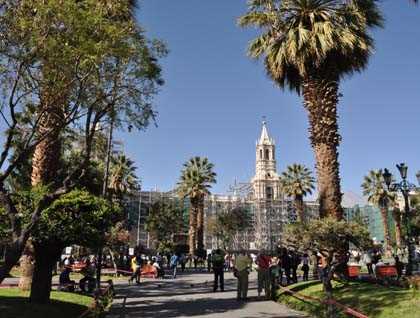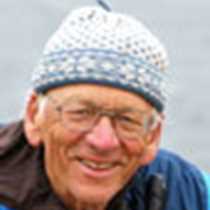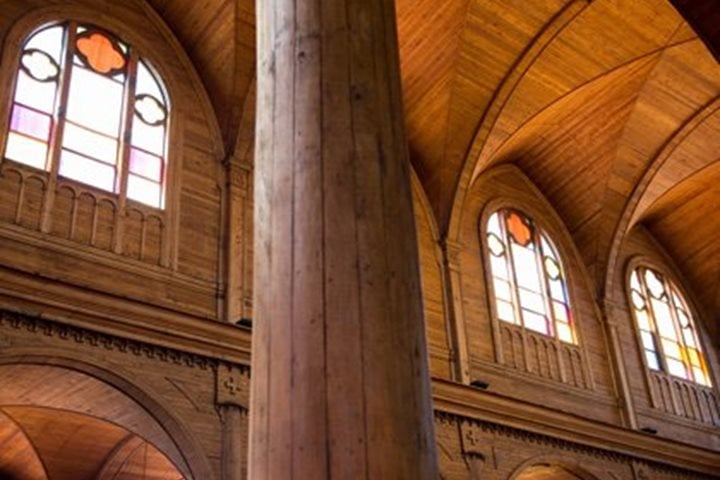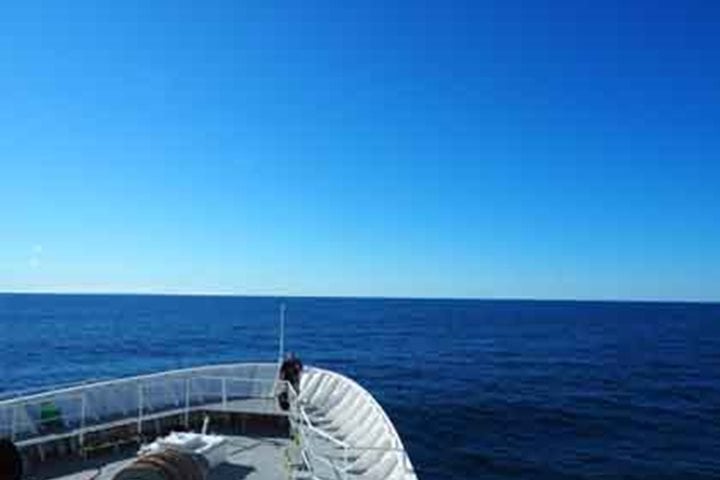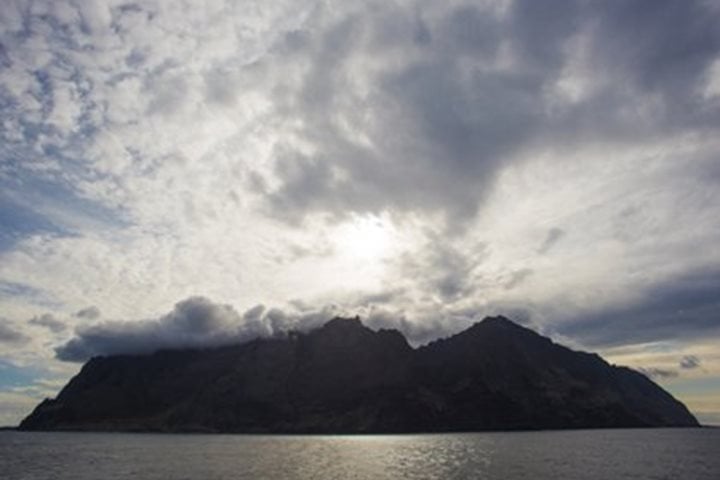Our last port of call in Peru was a small privately owned industrial port called Matarini. Off the breakwater we could see that even though small it was very active with freighters at anchor and local commercial fishing boats waiting to go out to sea. As soon as a freighter at the dock left the small entrance, our Captain deftly maneuvered the ship to the dock.
Before leaving our Global Perspective guest speaker Johan Reinhard gave a program on his high altitude archeological projects throughout the Andes. He included of course the story of finding the “Ice Maiden,” which is housed in a museum inland at Arequipa were many of the guests would be traveling. When Johann had finished we were then cleared by the local authorities and departed for the coach ride inland.
About 2/3 of the guests decided on this option. After leaving the port the drive took us inland over a major road that at first was arrow-straight but then reaching the foothills wound its way up and up into the Andes. Arequipa is known as the “White City” because of the white volcanic rock, called sillar, used in its buildings. The main square, typical of most Latin America cities, was a lovely plaza, a holdover from colonial days. During the visit we were able to take in the flavor of this attractive city and see some of the historical sites, including the city palace and the Cathedral. This main cathedral is the most important neoclassic religious building of the country, built in the mid-19th century over the ruins of the first baroque church. We then had a lovely lunch at a local restaurant. Following lunch we were treated to a visit to Santuario de Altura del Sur Andino Museum in the Catholic University of Santa Mariawhere “Juanita,” the Ice Maiden is on display. Later in the afternoon we returned to the port and the waiting National Geographic Explorer.
Once the Arequipa folks were away, the remaining guests were given an option to Zodiac cruise before lunch to a small group of islands not far from the port. On the islands we were again able to see some of the seabirds just starting to occupy the nesting sites. Inca terns swooped from the islands rocks out over the ocean in courtship flights. A few Humboldt’s penguins were onshore. And some of the guests were able to spot the local sea otters.
Following lunch we were transported southward along the coast. Our destination was the reserve of Meija Lagoons. This protected area is one of the last remaining coastal reed marshes on Peru. Draining for agriculture and development has reduced this habitat to an extremely small amount. With that reduction birds, resident and migratory, have lost areas to live in or visit during the northern winter. A few small platforms were constructed on the edge of open lagoon waters. This allowed us to observe some of the wetland birds that have migrated to the area. Here they may spend three or four months feeding on the rich food resources of the marsh and the Pacific Ocean beaches. A long bird list was recorded during the afternoon.
In the evening once everyone was back, the ship left the port and set a course directly toward the large northern Chilean city of Arica for our entry into this long narrow country.

